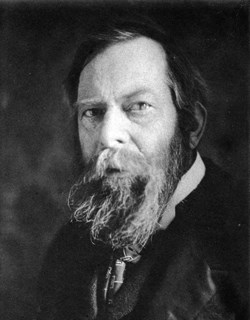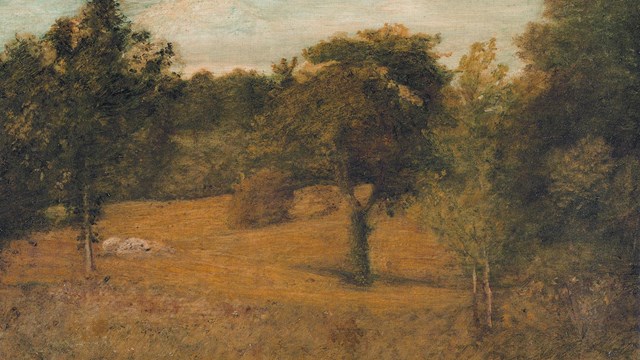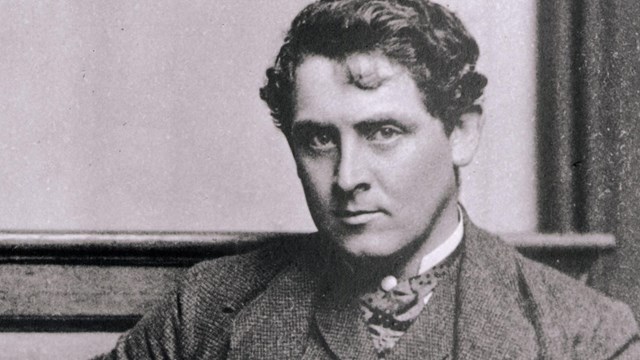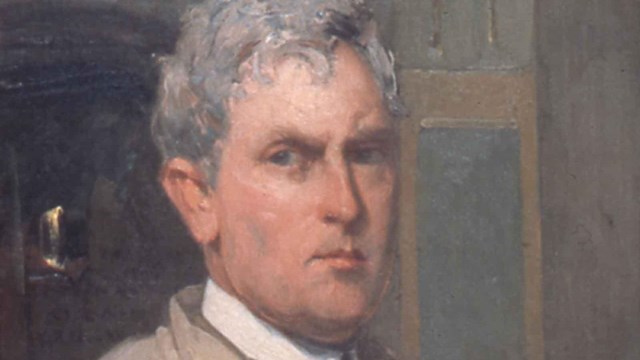|
Albert Pinkham Ryder was an American painter who focused on New England themes, especially the ocean, but with the addition of magical or supernatural qualities. He often incorporated folklore into his works, and wrote his own poetry as well. He was not a strict "Impressionist," nor a plein-air painter, but rather, he painted scenes infused with symbolism and feeling. He did exhibit for several years with the National Academy of Design, and occasionally with the Society of American Artists, but he was otherwise not involved in professional art organizations. Even so, his uniqueness as an artist set him apart. As his 1917 obituary read in the New York Times, Ryder "was one of the most interesting artists America has ever produced. Every picture that he painted was the result of years of reflection and experiment, and represented not only a deeply romantic temper of mind but infinite zest for perfection of craftsmanship." American Artist (1847-1917)
Albert Pinkham Ryder, Peter A. Juley & Son Collection, Smithsonian American Art Museum J0002132. Albert Pinkham Ryder was largely self-taught, and developed a singular style. He was not a strict "Impressionist," nor a plein-air painter, but rather, he painted scenes infused with symbolism and feeling. "What avails the storm cloud accurate in form and color, if the storm is not therein?" he wrote. His art was done all in oils, and the paint was then glazed over several times with cheap varnish, and as a result, many of his canvases today are in poor condition due to cracking. 
Albert Pinkham Ryder (1847 - 1917)
A reclusive American painter known for his magical, romantic, and symbolic imagery; Ryder was a frequent guest at Weir Farm. 
Julian Alden Weir (1852-1919)
As the father of American Impressionism, Weir used new, international ideas about painting to change American art. 
Meet the Artists
Learn about the prominent artists and their family members who lived and worked here. |
Last updated: December 18, 2020
